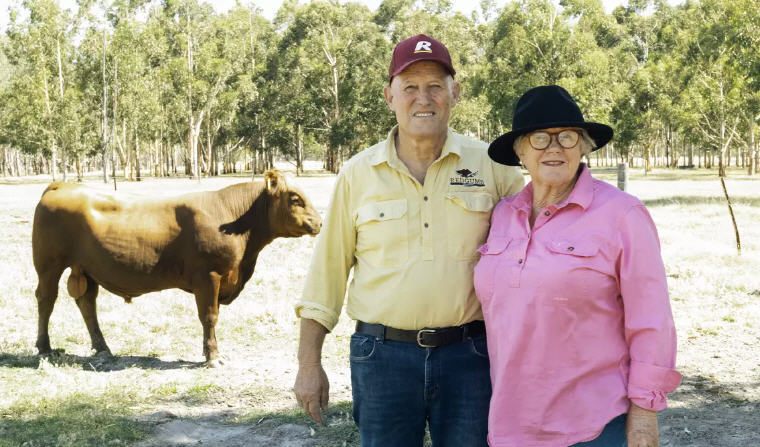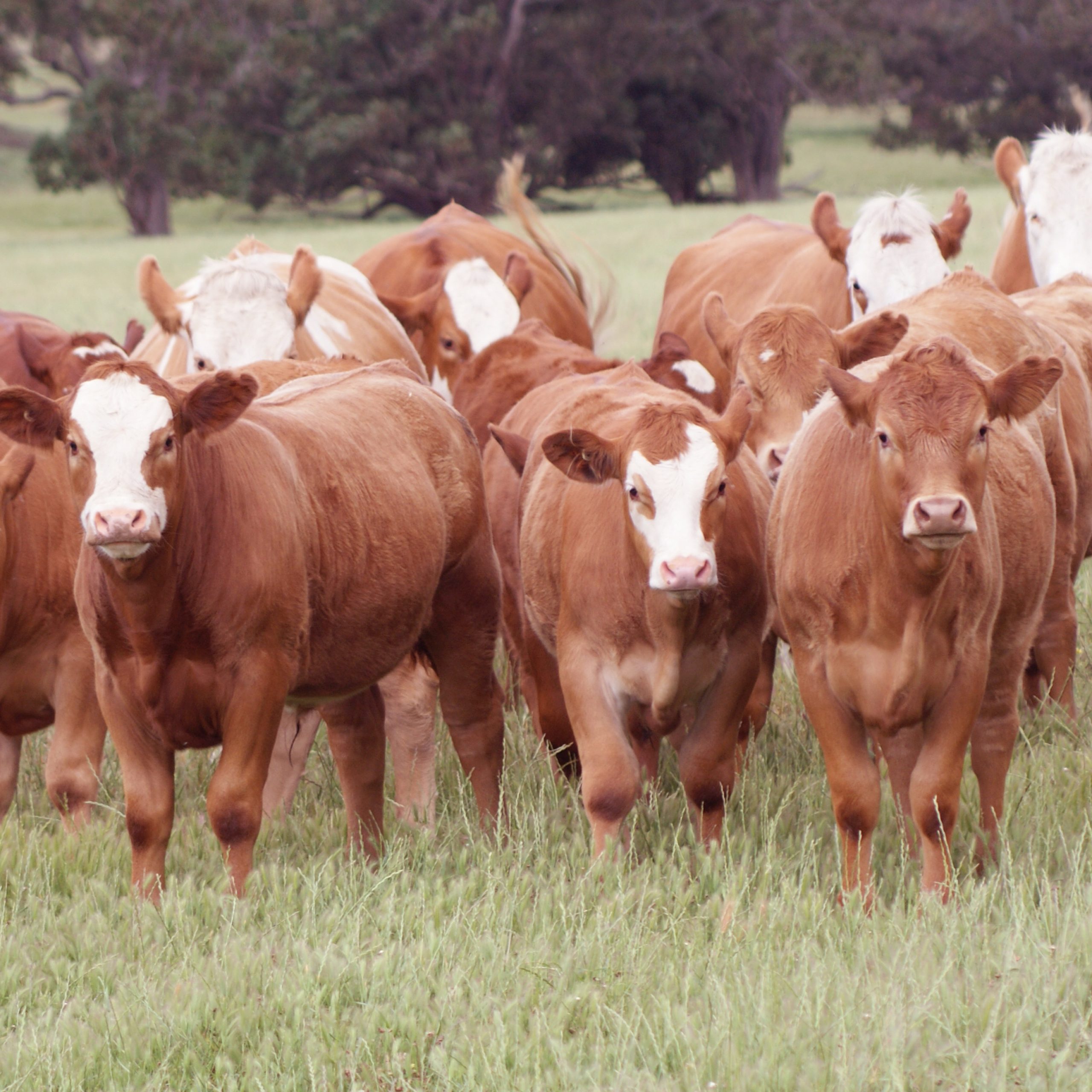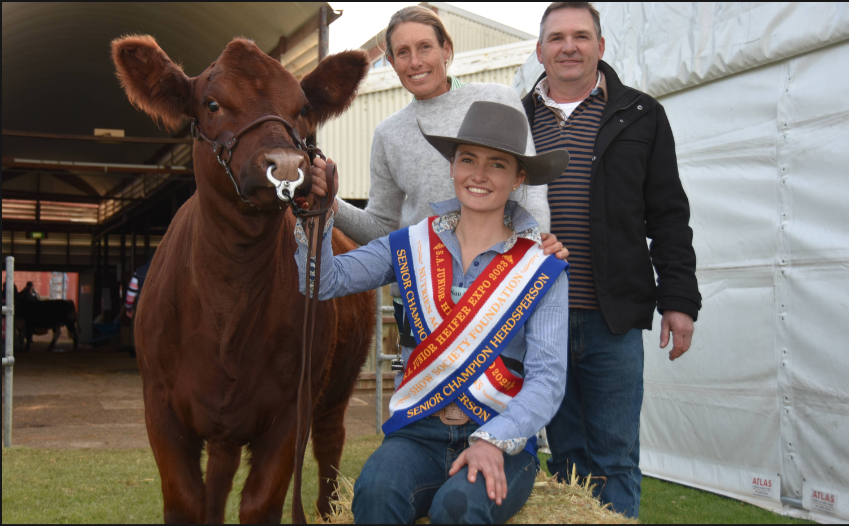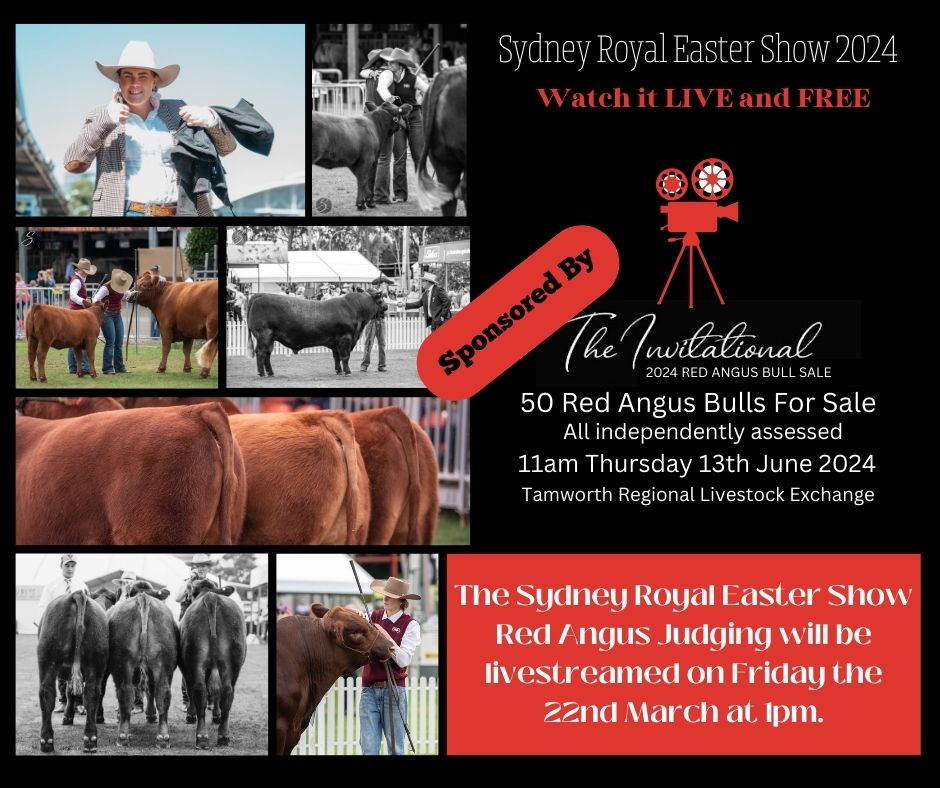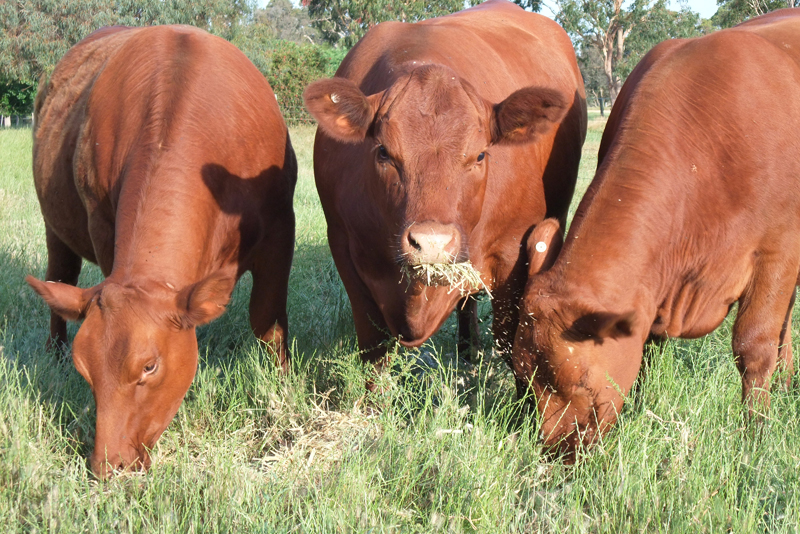
Red Angus and the Allure of Dry-Aged Beef
Graeme Bruce and his partner Esther Tay operate a beef, lamb and dry-ageing business on 650 acres just an hour and a quarter north of Melbourne at the picturesque Goldie Valley. Six years ago, the pair moved from Wangaratta where the dry-aging operation was originally established.
Ten years ago, Graeme’s attention was caught by an overseas article on the process of dry ageing. The following four years of a general interest and communicating with CSIRO and MLA, Graeme and Esther built a cool room with the intention of creating their own dry aged meat. Originally trialing the process began with their flock of White Dorper Sheep.
Today, Graeme and Esther breed a commercial Red Angus herd alongside their Aussie White flock. Following the ‘paddock-to-plate’ initiative, Graeme and Esther present pasteurized, dry-aged Red Angus beef and Aussie White lamb to a wide variety of customers.
With a Himalayan rock salt wall, scientifically proven temperatures, distinct humidity settings and specified wind speed, the dry-aging room differs from a standard cool room. Graeme explained a simplified production process where the cattle are sent to Hardwicks abattoir. From there, the carcass is transported back to Springhill Park. Once transported, the beef is hung for dry-ageing and is left for 21 days. Graeme ideally would prefer the meat to dry-age for 45 days, however strict Victorian regulations and cost constraints prevent Graeme and Esther from extending their PrimeSafe license for a longer aging period.
After the 21 days, the carcass is dressed by one of the four butchers employed and cryo-vacced for the wet aging process which is conducted in a standard cool room over 7 days. Once this is completed, the beef is collected by the consumers. Graeme and Esther have a client pool of over 60, with some of their beef going to commercial customers who sell the beef at paddock to plate operations.
The cool rooms currently hold up to six carcasses ranging from 250-350kg at any one time. Graeme and Esther are currently looking at improving their production system and plan on upgrading their facilities to hold up to 10-12 beef carcasses and 20 sheep carcasses. They are currently trialing this expansion.
“The key to success is good people,” said Graeme. The couple is extremely mindful of the importance of each small detail and tasks. Using this knowledge influences the effects within the accomplishment of the business production. Due to Graeme and Esther achieving such great success, they continue to offer their facilities to other beef producers. Graeme is proud to report that their facilities are almost completely booked for 2024 with some of their customers travelling up to 3 hours away.
The Red Angus breed fell into Graeme and Esther’s path by sheer coincidence. “I have never been a cattle person,” said Graeme. The interest in the Red Angus breed initially started back at Wangaratta where their White Dorpers were predominately run. However, as the family moved to Springhill Park, they were quick to learn the terrain was better suited to cattle. During this transition, there was also a change from White Dorpers to Aussie Whites with bloodlines based from Tattykeel bloodlines.
Fortunately, their Stock and Station agent introduced Graeme and Esther to Cliff Downey, Redgums Red Angus. The Springhill Red Angus herd’s bloodlines began with the acquisition of 17 Redgums Red Angus cattle. Shortly following this, Graeme and Esther broadened their genetic base by incorporating a bull from Hicks Beef. “We started off there and we have grown and now we have about 130 head,” said Graham.
When asked how the Red Angus beef performs, Graeme was quick to advise, “It’s really the quality of the genetics that we have. It has translated into the quality of the product.”
In July of 2021, Hardwicks Abattoir was purchased by Kilcoy Global Foods Family (KGF). This has created a challenge for Graeme and Esther as the abattoir is beginning to stop processing small batches of livestock, just recently announcing the stopping of producing organic beef. KGF is now leaning into solely producing packaging lines for exported beef. In time, Graeme and Esther will lose one of their steps in production. Future thinking Graeme isn’t panicking as he is currently studying the possibility of moving this production step to be held on farm.
As for the future, Graeme and Esther operations are a lifestyle choice. They are currently in succession planning as they expand their travel horizons with plans for overseas adventures. In the meantime, you’ll find Graeme and Esther busy keeping up with the demand of orders of high-quality dry-aged beef and lamb.


What is Dry-Aging?
Prior to the 1960’s the traditional method for ageing beef was dry ageing. Unpackaged beef carcasses and cuts were hung or racked in chillers with controlled temperature and relative humidity conditions.
Ageing in these conditions is believed to give beef a characteristic beefy, roast, buttery, nutty flavour. The processing parameters for dry ageing differ from the present-day commercial ageing method known as wet ageing. The flavour imparted by the dry ageing process and the subsequent yield loss as a result of the process means dry aged beef commands a premium in the high-quality restaurant and retail markets.
Research has shown that the major factors influencing the sensory qualities of dry aged beef are; storage temperature, ageing time, relative humidity and air flow. Ensuring compliance with the set points within these parameters controls the growth of undesirable microorganisms. The set points also need to allow the process to be economically viable keeping yield loss to a minimum.
*Meat and Livestock Australia Limited, 2021, Dry Aged Beef – Design and Good Manufacturing Practices Review



